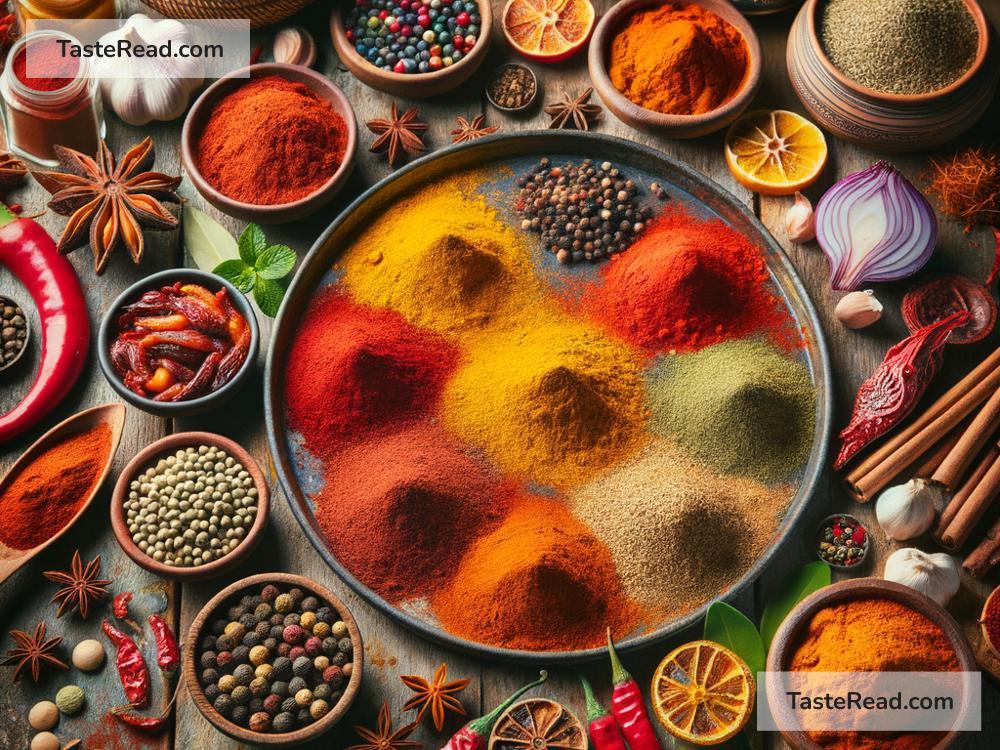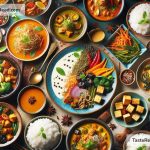The Flavorful Journey: The Influence of Indian Spices on Malaysian Cuisine
Welcome to the flavorful journey exploring how Indian spices have intricately woven their way into Malaysian cuisine, creating a tapestry rich with color, aroma, and taste. Malaysian food, known for its vibrant flavors, owes much of its culinary depth and diversity to the centuries-old influence of Indian spices.
The Historical Spice Route
The story begins with ancient trade routes. Centuries ago, traders from the Indian subcontinent, seeking new markets, ventured into Southeast Asia, bringing with them precious cargoes of spices. These weren’t just commodities; they were bearers of culture, flavors, and cooking methods. As they settled in the Malay Archipelago, they introduced the locals to a treasure trove of spices like cumin, coriander, turmeric, and cardamom.
A Blend of Tastes
Over time, these spices became integral to Malaysian cooking, leading to a fusion of culinary practices that is evident in the country’s cuisine today. Indian spices added depth and complexity to the existing Malay flavors, giving rise to dishes that are a blend of both cultures. This blending of tastes is not just a matter of adding more ingredients to the pot; it’s about creating a harmonious balance that respects and enhances the characteristics of each component.
Iconic Malaysian Dishes with Indian Flair
One cannot talk about the influence of Indian spices on Malaysian cuisine without mentioning some of the iconic dishes that epitomize this blend of culinary traditions. Here are a few:
-
Nasi Kandar: Originally from Penang, Nasi Kandar is a testament to the Indian-Muslim influence, featuring steamed rice served with a variety of curries and side dishes. What makes it uniquely Malaysian is the way local spices and ingredients are integrated into the recipes, creating a distinct flavor profile.
-
Roti Canai: This flaky, buttery flatbread of Indian origin has found a second home in Malaysia. Paired with dhal (lentil curry) or other curries, Roti Canai is a beloved breakfast and snack item, showcasing the versatility of Indian wheat-based dishes adapted with local flavors.
-
Mamak Stall Staples: The term ‘Mamak’ refers to the Tamil Muslims in Malaysia, and Mamak stalls are famed for their Indian-Muslim cuisine. Here, you’ll find an array of dishes spiced with the fondly embraced Indian palette, including Mee Goreng (fried noodles) and Teh Tarik (pulled tea), both infused with spices that elevate the taste beyond the ordinary.
The Spice Melange
The secret to the captivating flavors of Malaysian cuisine lies in the masterful use of spices. Turmeric, with its earthy bitterness and vibrant color, is a staple in curries and rice dishes. Cumin and coriander seeds add warmth and sweetness, while fennel seeds introduce a slightly licorice-like taste that’s distinctive in many spice blends.
Chilies, brought to Asia by Portuguese traders but quickly adopted into local cuisine, add heat and intensity, a characteristic feature in both Indian and Malaysian dishes. The use of these and other spices—such as mustard seeds, fenugreek, and cinnamon—not only adds complexity to the dishes but also weaves a story of cultural integration through food.
Health Benefits
Beyond taste, Indian spices bring a wealth of health benefits, making their inclusion in Malaysian cuisine not just a matter of flavor but also of wellness. Turmeric’s anti-inflammatory properties, the antioxidant qualities of coriander and cumin, and the digestive benefits of asafoetida are just a few examples of how these spices contribute to a healthful diet.
The Cultural Melting Pot
Malaysia’s culinary scene is a mirror reflecting the country’s multicultural landscape. The influence of Indian spices has not only enhanced the food but also enriched the culture, fostering a sense of unity and mutual appreciation among its people. This culinary melting pot is a testament to how food can bridge cultural divides, bringing people together in appreciation of shared flavors and histories.
In Conclusion
The influence of Indian spices on Malaysian cuisine is a story of journey, discovery, and integration. It’s a narrative that highlights the power of food in transcending borders, fostering connections, and creating a rich, shared cultural heritage. As we savor the flavors of Malaysian dishes spiced with Indian flair, we’re reminded of the beauty of cultural diversity and the endless possibilities when cultures intertwine through the love of food.


